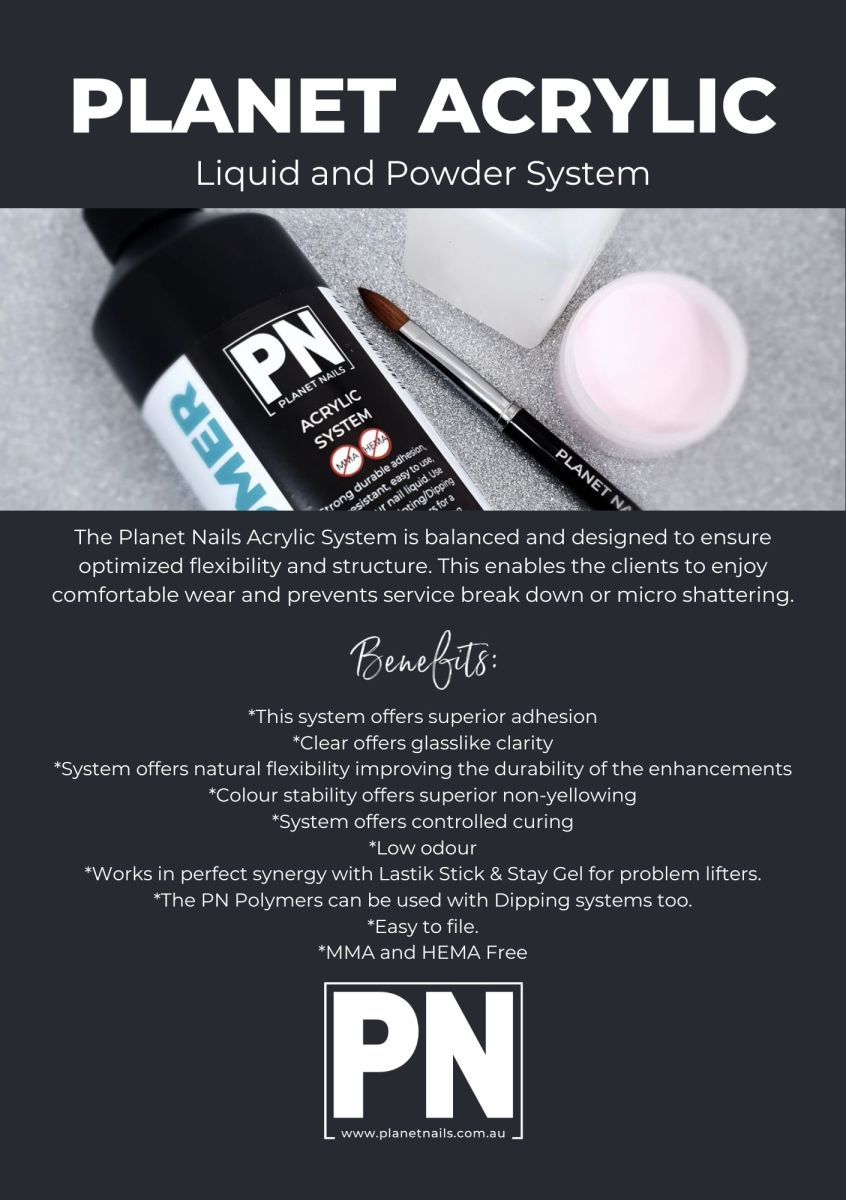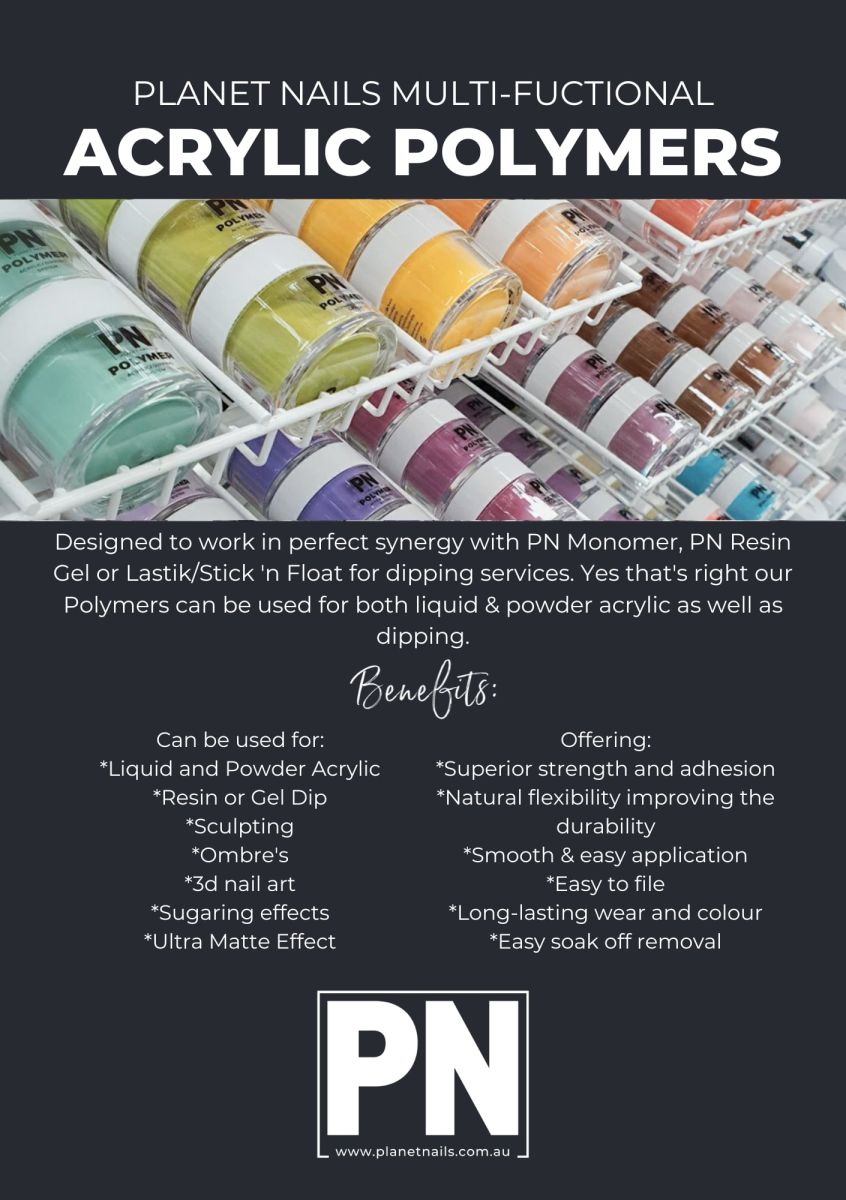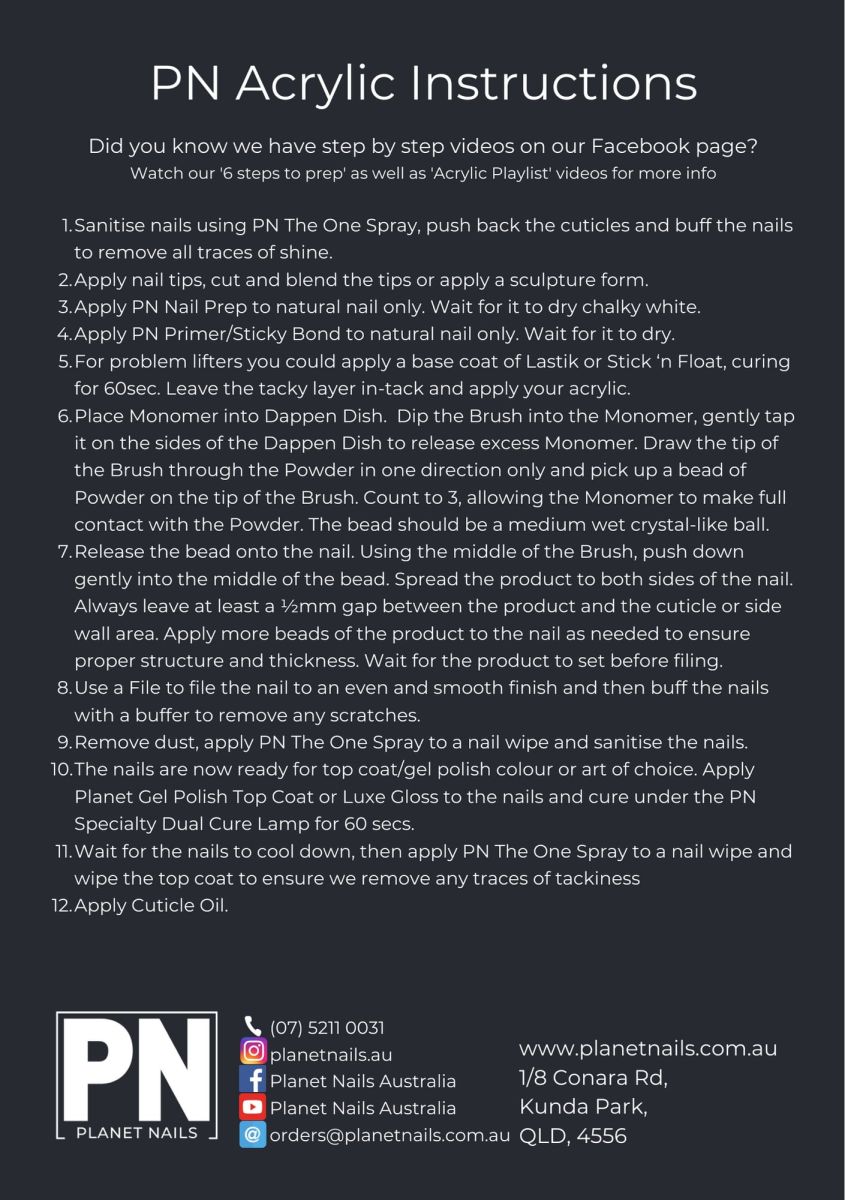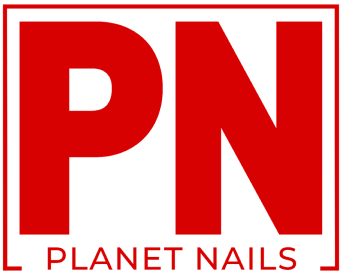Acrylic


FAQ
Our polymer can be used for overlays, extenstions and can be used with the DIP system.
Yes, our monomer is both HEMA and MMA free.
Our acrylic is a medium set system and can be greatly affected by temperature. If your room is cold, it will take longer, and even longer still if your client has cold hands.
You are able to place your monomer dappen dish over something warm like a heat pack to warm the monomer slightly to help. You are also able to place a heat pack under your clients' hands whilst performing your service, which can help with warming their hands.
You are able to place your monomer dappen dish over something warm like a heat pack to warm the monomer slightly to help. You are also able to place a heat pack under your clients' hands whilst performing your service, which can help with warming their hands.
The polymers don't "work" differently, but they can feel different when being used, this is due to pigmentation. For example, the Clear polymer is light and very easy to work with, the White polymer however is denser and is highly pigmented and thus you might find you need to work a little wetter with the white. All the polymers and especially the colours all have different levels of pigmentation to them.
We recommend using Planet Nails Master Kolinsky Brushes - there are three sizes (#8, #10 and #12). Find the brush size that suits you. The most popular size for beginners is #8.
Primer will freeze in temperatures lower than 7 degrees. Remember to warm it up, all you need to do is hold in your hands for a few minutes or place it on a heat pack. Being frozen and than thawed will not alter the properties of primer and you will be able to use it as you normally would.
.png)
.png)
None of our products are tested on animals nor do they contain any animal derived products except our Sable Hair (Kolinsky) Acrylic Brushes.
All our products are manufactured to work together, we can only guarantee the integrity of our products when used together.
Our monomer was developed to be used with the Planet Nails Polymer powders, so we can't guarantee the integrity with the use of other brands.
The hair of a new brush is shaped with Arabic gum, a starch film. This has to be removed thoroughly before using the brush for the first time. The hair splits when the film is not removed completely, this damage is irreversible.
To start remove your brush from its packaging. Remove the plastic protection cap from your new brush. Do not place this back when the brush has been in contact with acrylic liquid. The liquid can cause the plastic cap to melt together with the hair of the brush. Next start the film removing process by thoroughly rolling the brush head over a lint free towel whilst it is still dry. Take clean liquid or brush cleaner and submerge the hair of the brush. When using monomer ensure that it is clean liquid, used liquid may be contaminated by acrylic powder particles that can cause the acrylic to cure in the brush. Turn the brush to make sure that all the hair is coated with liquid. After this step the hair of the brush should not be touched with the fingers anymore. Fully submerge the brush in liquid, pushing it down on the bottom of the dappen dish. Perform this step a few times. Remove the brush and wipe it on a clean lint free towel. Check that the hair has separated into individual strands, if not repeat the above steps until it does. When you are happy that you have cleaned the brush thoroughly make sure that you have drained all excess fluid out of the brush. Be certain that all the liquid is gone from the metal ferrule to prevent discoloration. The residual liquid is not suitable for use because of possible contamination and should be discarded.
When you are not using your brush it is important to bring the hair to the desired shape and storing the brush either lying horizontally or hanging up side down. This ensures the longevity of your brush.
To start remove your brush from its packaging. Remove the plastic protection cap from your new brush. Do not place this back when the brush has been in contact with acrylic liquid. The liquid can cause the plastic cap to melt together with the hair of the brush. Next start the film removing process by thoroughly rolling the brush head over a lint free towel whilst it is still dry. Take clean liquid or brush cleaner and submerge the hair of the brush. When using monomer ensure that it is clean liquid, used liquid may be contaminated by acrylic powder particles that can cause the acrylic to cure in the brush. Turn the brush to make sure that all the hair is coated with liquid. After this step the hair of the brush should not be touched with the fingers anymore. Fully submerge the brush in liquid, pushing it down on the bottom of the dappen dish. Perform this step a few times. Remove the brush and wipe it on a clean lint free towel. Check that the hair has separated into individual strands, if not repeat the above steps until it does. When you are happy that you have cleaned the brush thoroughly make sure that you have drained all excess fluid out of the brush. Be certain that all the liquid is gone from the metal ferrule to prevent discoloration. The residual liquid is not suitable for use because of possible contamination and should be discarded.
When you are not using your brush it is important to bring the hair to the desired shape and storing the brush either lying horizontally or hanging up side down. This ensures the longevity of your brush.

-
100% Secure Content
-
Competitive Pricing!
-
Order Tracking Available
-
3 - 6 days for delivery





